In the late 1970’s, I lived in Manhattan. I had moved from the West Coast with a group of friends who thought they wanted to live in New York City. The experiment largely failed, as no one lasted there more than five years. We scattered again all over the United States, but we never forgot New York City --- nor forgave it. It was not America, and so not-America that we often thought the best thing that could happen would be for someone to drop a bomb on it. We always spoke this way about Manhattan, as a matter of course, until 9/11, when it became incorrect and maybe even dangerous to talk that way.
Still, New York City is a dramatic, 24-hour place to live. I was sipping bortsch one day in the Russian Tea Room when Woody Allen and Diane Keaton sat down for lunch just one table over. They were engaged in a hushed, passionate conversation; but so was I, with the same gentleman who took me to singer Paul Simon’s birthday party at the top of the Empire State Building. I was introduced to Simon, who was extremely soft-spoken and very short. Simon was standing next to a tall man, perhaps so people could find him. The famous are commonplace and rather unpretentious in this larger-than-life City.
New York’s virtues were large, though few; and cleanliness and humanity were not among them. I prepared a picnic lunch to eat in Central Park, as it was a warm spring day. I found a grassy area with old trees, picked a boulder, and climbed up to sit. As I prepared my spot, I noticed out the corner of my eye that I had a visitor: a rat the length of my forearm was sitting up on his hide legs, on the same rock, staring at me. I was sickened. Afraid and unsure what to do, I started to pack up, very slowly, in case a quick move would provoke the rat to lunge and bite. Then I jumped and ran.
I began to notice rats after that.
Continuous garbage strikes characterized Manhattan, too, in the 70's. There was a pervasive smell of garbage most of the time, and trash blew around in the streets. People dropped their trash wherever they happened to be, having given up on putting trash in the overfull cans which were located on every corner of every block. Really, I had never seen a city with such good intentions. Chicago is probably one of the cleanest cities in the United States, and one must walk out of the way a few blocks to get to a trash can.
One expects cockroaches, though. The west-side apartment I shared was probably built in the 1940’s. It was spacious and charming with interior French doors and dark-wood moldings. It was quite a lovely space, by day, and while we were all up in the evening, enjoying dinner and coffee. We would clean the kitchen before bedtime, too, making sure there were no dishes left in the sink.
It was my habit, sometime in the night, to go to the kitchen for water. It was the oddest thing: just as I switched on the light, I would hear the sound of clicking, a rush of clicking, and then it was over; and there was nothing I could discern that made such a noise.
Curious, one evening I decided to enter the kitchen without turning on the light. I could just see enough to discern little dark bodies all over the plates in the dish rack, all over the counter tops, and everywhere in the glass-front cabinets, in fact, anywhere I looked and on top of everything. I made the slightest sound, and shiny wings moved in unison. I turned on the faucet, and the little bodies scattered, making that clicking noise with which I had become familiar.
On occasion, a cockroach would skitter across my face in the middle of the night, waking me in my bed. I would open my purse, and a cockroach would crawl out, having traveled across town with me on the subway.
While rats and cockroaches were disgusting, by far the worst, most unimaginable sight I had ever seen were the homeless. New York City has an elaborate subway system, and the underground tunnels through which the trains run are aerated by openings to the ground above. By convection, the heat from the trains comes up through these passageways, which are grated at street level. These subway grates are all along the sidewalks in Manhattan, and there is enough breeze coming up to catch your clothing in the style of Marilyn Monroe's flying skirt.
On the coldest, snowiest evenings in winter, there were people heaped on top of each other on the subway grates in every direction I looked. Stacks of people, maybe three or four people to a layer and five or six layers deep. I had never seen anything like this, as homelessness was not yet commonplace in America.
On Central Park South, in a fashionable part of town, I stepped over a large woman whose feces had run in rivelets across the sidewalk to the curb. She wore a quart of ice cream on her head. It was a hot day.
New York City was the filthiest, most disgusting, hellish place I had ever seen, and I swore never to go back. It was deeply troubling to me that New Yorkers seemed to accept the idea of people living in the street, and it was hard to understand why there seemed to be no effort made to help. Though my stay there provided years' worth of astoundingly dark stories to tell, there were things I wish I had never seen.
People say New York City has really cleaned up in recent times, but I find it hard to believe there are no more rats or cockroaches. And, I doubt that New York has done anything about their homeless, except perhaps shuttle them off to another part of town and out of sight of tourists. Besides, Americans now take homelessness for granted, the way Third World nations do.
In 1980, utterly finished with all things New York, I moved a clean and safe distance to Chicago. I was living in Lincoln Park and Ronald Reagan had just taken office. He intended to reshape America with "trickle down" economics and our place in the world with the Strategic Defense Initiative, or "star wars" program; but he would also "roll back" social services in our country.
The lady on our corner was elderly, probably around 70. She seemed clean and well-dressed, but it was winter and nightfall and she should not have been outdoors standing in front of the the corner store with a grocery cart. She was there every day and every night, and the residents of my apartment building would buy her coffee and sandwiches. No one knew who she was, where she came from, or why she was on our corner. I asked her about herself once, but her words were unintelligible. I assumed she had some form of dementia. The first "bag lady" in our neighborhood had arrived and the first homeless person I had ever seen outside of Manhattan.
Hello world!
-
Welcome to WordPress. This is your first post. Edit or delete it, then
start writing!





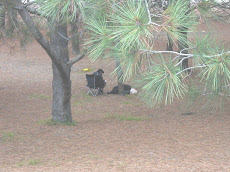



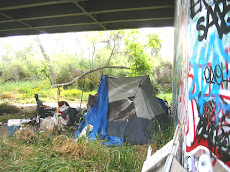







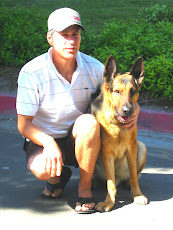
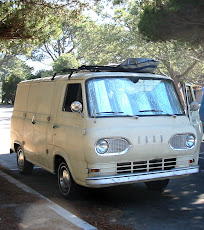
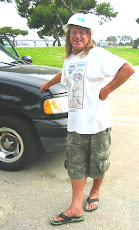









No comments:
Post a Comment